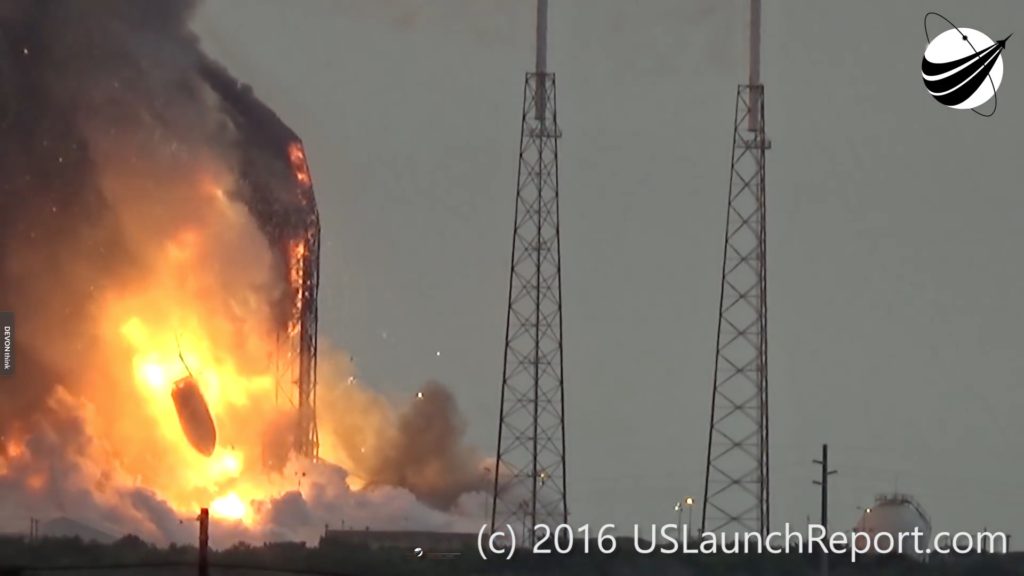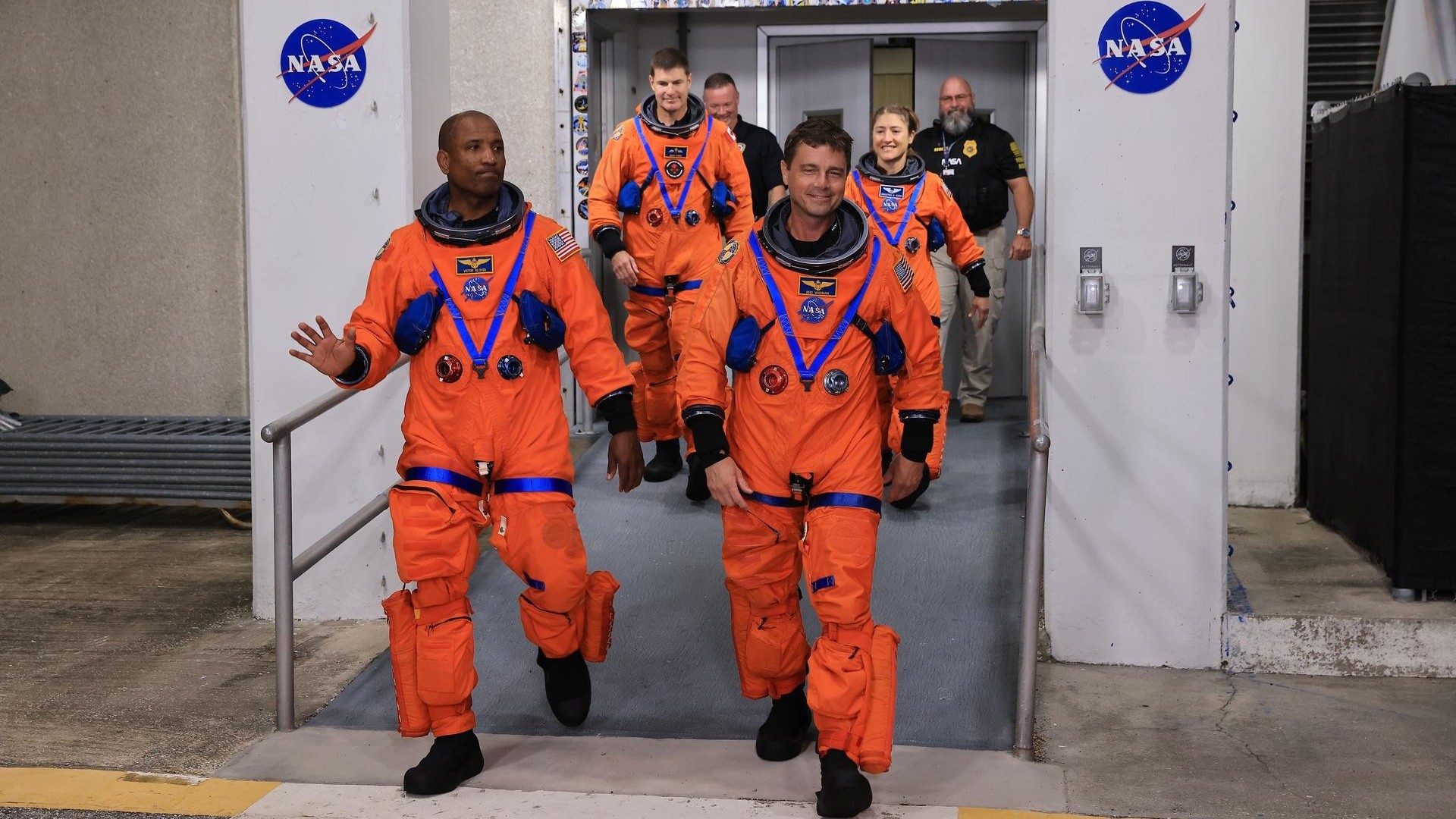SpaceX Falcon 9 Explosion Could Have Ripple Effects Across Space Industry

WASHINGTON — The apparent explosion of a SpaceX Falcon 9 launch vehicle during a static fire test Sept. 1 has implications for both commercial and government customers, including putting into jeopardy the sale of one satellite operator.
The explosion took place during preparations for a static fire test, part of SpaceX's standard pre-launch preparations for Falcon 9 flights at Space Launch Complex 40 at Cape Canaveral Air Force Station, Florida. The test was in advance of a Sept. 3 launch of the Amos-6 communications satellite for Israeli satellite operator Spacecom.

SpaceX said that the Amos-6 payload was destroyed in the failure, which could jeopardize the planned acquisition of Spacecom by Beijing Xinwei Technology Group, a Chinese conglomerate. The deal, announced Aug. 24, was pending the successful entry into service of Amos-6 after the launch.
Shares in Spacecom, traded on the Tel Aviv Stock Exchange, fell by more than nine percent Thursday, falling sharply after reports of the pad explosion.
While the cause of the launch pad explosion is not known, any extended downtime for the Falcon 9 could have significant implications for both commercial customers and NASA. SpaceX had planned to carry out as many as nine Falcon 9 launches, including Amos-6, through the end of 2016. Those missions may now be delayed for weeks or months.
SES also planned to launch its SES-10 and SES-11 satellites on separate Falcon 9 launches this year. On Aug. 30, SES announced the SES-10 launch would use a Falcon 9 first stage previously flown on a NASA cargo mission in April, the first time a Falcon 9 first stage would be reused.
Other commercial and international customers for Falcon 9 launches scheduled for this year include EchoStar, KT Corp. of South Korea and Taiwan's National Space Program Office. The Taiwanese launch also included, as a secondary payload, Spaceflight Industries' Sherpa secondary payload, carrying nearly 90 small satellites.
Breaking space news, the latest updates on rocket launches, skywatching events and more!
NASA planned to launch a Dragon cargo mission to the International Space Station in November on a Falcon 9. A likely delay in that launch complicates a cargo resupply schedule that is already dealing with delays in launches of an Orbital ATK Cygnus spacecraft, previously scheduled for August, and a Japanese H-2 Transfer Vehicle spacecraft delayed from early October.
An extended delay in Falcon 9 missions could also affect NASA's commercial crew plans. SpaceX had planned to carry out an uncrewed test flight of its Crew Dragon spacecraft in May 2017 and a crewed test flight to the ISS in August 2017.
Nine SpaceX customers that had been expecting to launch on a Falcon 9 before the end of 2016:
Spacecom, Amos-6. An in-orbit failure of a Spacecom satellite has put pressure on the company to shore up its revenue base and customer set and to launch Amos-6 as soon as possible. It was already late before it was destroyed Sept. 1 during preparations for a Falcon 9 static-fire test.
EchoStar Corp., EchoStar-23. EchoStar told investors to expect a launch in October.
SES, SES-10. The Luxembourg fleet operator was an early SpaceX supporter and has two satellites slated for launch on Falcon 9 this year. SES-10 is set to go first, and has substantial incremental capacity that SES is counting on to drive revenue growth late this year.
SES, SES-11/EchoStar-105. This satellite, part of a commercial agreement with EchoStar, looked like the most likely inaugural customer for a reused Falcon 9 first stage because it is intended to replace capacity in orbit. But SES announced Aug. 30 that it was going to entrust SES-10 to Falcon 9's first re-flight.
NASA, Dragon CRS-10 cargo-transport mission to the International Space Station, now scheduled for November.
KT Corp. of South Korea, Koreasat-5A. The company has told investors the launch should occur before the end of this year.
In addition the above launches from Cape Canaveral, SpaceX has three launches scheduled from Vandenberg:
Iridium Communications, Iridium Next 1-10. Launch of the first 10 satellites for Iridium's second-generation constellation is now scheduled for mid-September.
National Space Program Office (NSPO) of Taiwan, Formosat-5; and Spaceflight Inc.'s Sherpa small-satellite tug. Repeatedly delayed, this launch is scheduled for late this year. But in a launch manifest crowded with customers whose businesses depend on mission timing, NSPO may find it hard to maintain its slot.
Iridium Communications, Iridium Next 11-20. For insurance and satellite-validation reasons, Iridium needs to wait three months from the first launch to the second. Assuming a successful launch of the first 10 satellites, a slip into early 2017 would not do damage to the company.
This story was provided by SpaceNews, dedicated to covering all aspects of the space industry.
Join our Space Forums to keep talking space on the latest missions, night sky and more! And if you have a news tip, correction or comment, let us know at: community@space.com.

Jeff Foust is a Senior Staff Writer at SpaceNews, a space industry news magazine and website, where he writes about space policy, commercial spaceflight and other aerospace industry topics. Jeff has a Ph.D. in planetary sciences from the Massachusetts Institute of Technology and earned a bachelor's degree in geophysics and planetary science from the California Institute of Technology. You can see Jeff's latest projects by following him on Twitter.

